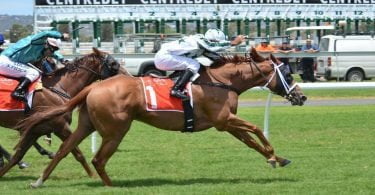Eau Rouge, Blanchimont, Les Combes… these names have resonated throughout Formula 1 history as being just a small part of the sport’s most famous and beloved circuit.
Eau Rouge, Blanchimont, Les Combes… these names have resonated throughout Formula 1 history as being just a small part of the sport’s most famous and beloved circuit. Ask any F1 driver past or present which circuit he would most like to win at, and along with his home race and of course the glamour that is Monte Carlo, he will most undoubtedly also choose Spa. This mythical circuit which nestles in the Ardennes region of Belgium, in possibly one of the most out of the way places in a country which has few claims to fame apart from the EU parliament, is a challenge in speed, precision and balls.
The Circuit de Spa-Francorchamps was designed in 1920 by Jules de Their and Henri Langlois Van Ophem and used public roads to make a triangular shape between the towns of Spa, Malmedy and Stavelot. The first car race was held at the original track in 1922 and two years later hosted the famous 24 hours of Francorchamps race. In 1925, it hosted its first official grand prix race. The track was very high speed and quickly became a firm favourite among drivers and fans. Unfortunately, the nature of the circuit made it notorious for fatal accidents. Ten fatalities occurred between 1960 and 1969 as well as a number of other serious accidents which eventually earned the circuit the title of being the most dangerous in the world. This led the Formula 1 drivers to boycott the race, calling for safety improvements to the circuit. Armco barriers were eventually added and sections of the track improved, however this wasn’t enough and Formula 1 stayed away from Spa for a number of years before the circuit was modified entirely.
Spa returned to the Formula 1 calendar in its revised four mile state in 1979 and has remained there ever since, apart from two years off in 2003 and 2006, when the circuit was suffering financial difficulties. The current lap record of the circuit is held by double world champion Sebastian Vettel, in a time of 1:47.263 who states that the track is one of his favourites, especially after winning there in 2011.
So, what makes Spa a “drivers’ circuit”? One of the track’s most unique features is its micro-climate which means it can be raining on one part of the circuit while dry on another – certainly a challenge in itself. Eau Rouge, the most fearsome and famous corner in Formula 1, although some believe it to have been neutered somewhat over the years, has to be driven flat out, uphill, in order to maximise the car’s performance in the next section of the track. A mistake here can lead to an almighty crash, which former champion Jacques Villeneuve can attest to. He dubbed his shunt at Eau Rouge as, “My best ever crash.”
You would be hard pressed to find a racing driver who doesn’t love the challenge of Spa. Fernando Alonso has stated it is his favourite place to drive an F1 car, while Michael Schumacher says, “I call it my living room.” Australian driver Mark Webber sums it up best for any spectator of Formula 1 when he says, “Eau Rouge is a very special part of the track, the spectators love going to watch the cars there and I would encourage anyone to see it live once in their lives – it’s mind blowing. It’s one of the classic tracks where you feel like an F1 car belongs on the circuit.”
It is also important to note that only the best drivers have won at Spa. Nearly every driver who has won at Spa has gone on to win a championship or at the very least, has had his name go down in Formula 1 history as one of the sport’s greats. Jim Clark, Niki Lauda, Ayrton Senna, Michael Schumacher, Damon Hill, Kimi Raikkonen… these are some of the best drivers Formula 1 has seen over its history and all of them have won at Spa, often more than once.
Spa’s mixture of hairpins, sweeping turns, hills and unpredictable weather, as well as its location in the Ardennes forest makes it a fantastic venue for a motorsport race. And if 24 men who race cars very fast for a living call it the best, then who are we to argue?








